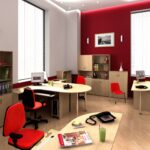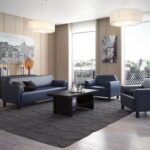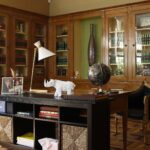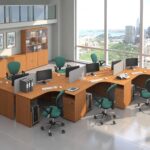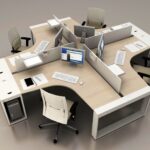How to conveniently arrange furniture in the office
If the office is illiterately planned, it will be uncomfortable for employees and clients to be there. A comfortable, functional and beautiful workspace is another matter.

Large firms entrust the task to designers, but smaller companies often have to cope on their own in organizing the space. To do everything right, you need to know how to arrange tables in the office, which sofas and armchairs to choose, and how to plan the space. Let's talk about these and other important nuances.
- How to choose a design
- Calculating the amount of furniture
- Options for arranging office furniture in the office
- Workspace organization
- Arrangement of furniture in the office according to the rules of Feng Shui
- How to avoid mistakes
- Video: what to consider when choosing office furniture
- Photo gallery: office furniture and furniture for the customer waiting area
How to choose a design
The choice of style and arrangement of furniture depends on many aspects. The first is the type of activity of the company, the area of the premises and the number of employees. If a firm accepts clients in the office, it is necessary to choose a design that will dispose visitors in a relaxed manner.

Most offices use modern design styles - ergonomic, concise. This is a justified choice, since you do not need empty decor at work. But there is no need to go over to complete asceticism: after all, people work in the office who work much more efficiently in a comfortable, rather than "Spartan" environment.

Calculating the amount of furniture
To calculate all the options for how to arrange tables in the office, you need to consider:
- office size;
- the number of tables and employees;
- ease of access to cabinets and archives;
- placement of light sources and sockets.

Information. According to the norms established at the legislative level, the distance between the tables must be at least 2 m, and for one employee who works at the computer, there must be at least 4.5 square meters. m.
Options for arranging office furniture in the office
The arrangement of tables in the office is performed in accordance with the rules:
- workplaces are organized in such a way that employees do not sit facing each other;
- tables are not placed near the stairs, under voluminous chandeliers, ceiling beams - this creates stressful feelings for the staff, which reduces the employee's performance;
- chairs are not placed back to back; it is important that there is a partition, wall, wardrobe, free area (spacious passage) behind the employee's back;
- the optimal place for the executive's desk is diagonally from the front door to the office.

Workspace organization
Modern offices are located in a wide variety of spaces, ranging from old and historic buildings to redesigned factories and specialist centers. Depending on the characteristics of the premises, the type of organization, the arrangement of office furniture and the layout of the workspace will depend.

The effectiveness and relevance of a particular option is determined by the direction of the firm and the need for employees in constant interaction with each other.

Open plan
Or Open Space. The idea of creation belongs to Frank Duffy. In 1962, he proposed such a layout in one of his student papers. Modern options for open-space offices differ from the original ones, but retained the main features:
- there are no partitions between the tables;
- separate offices - only at the top management.

There are 4 types of jobs in Open Space:
- Team-oriented ‘bullpen’ or “team-oriented” room - desks are set up so that employees can hear and see each other, suitable for team projects, activities that require constant close interaction of the work team.
- High-panelled cubicles (workspace with partitions) - the common office space is divided by partitions that create “cells” for each employee, suitable for call centers, enterprises where employees do not need to constantly contact each other.
- Low-panelled cubicles (with low partitions) - in this design option, a sedentary employee can see colleagues and the rest of the office space, this method of office design creates a kind of personal barrier that provides psychological comfort, but does not block the communication paths of employees.
- Clusters or “cluster” space - the tables of one working group are set with low partitions between each other, each group of “cluster” is separated by high partitions, the way of organization is suitable for projects on which several teams of different orientations are working.
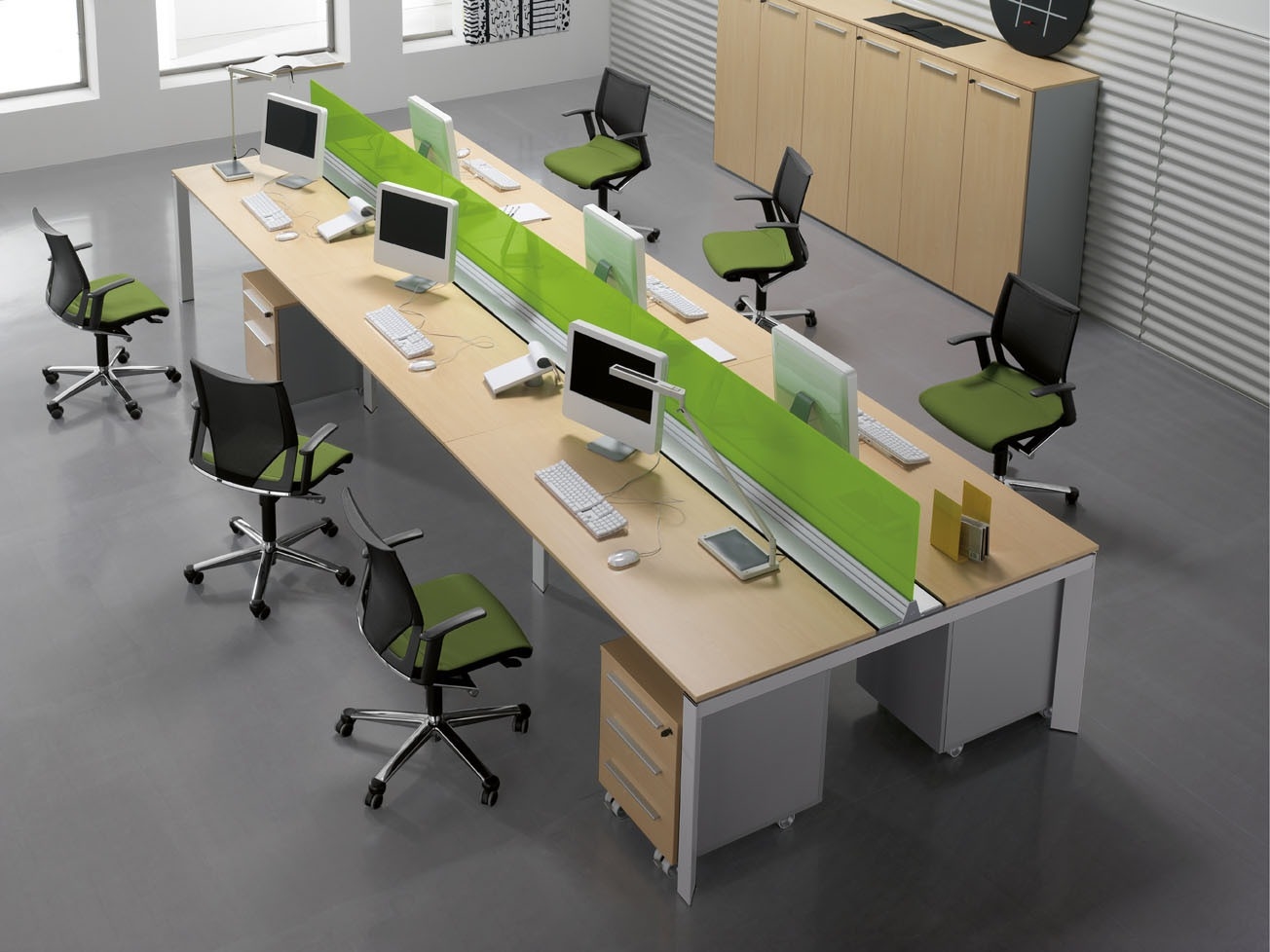
This option for organizing the space promotes close communication between employees, building relationships, working process and prevents the spread of office gossip. The fact is that all employees are in full view of colleagues and superiors, which should motivate them to work effectively. It also gives motivation to move up the career ladder to get a separate office.

In fact, open space has as many disadvantages as there are advantages:
- noise is generated in the room;
- employees feel uncomfortable due to the lack of personal space;
- relations between colleagues are heating up.
This way of organizing office space is not suitable for all companies.
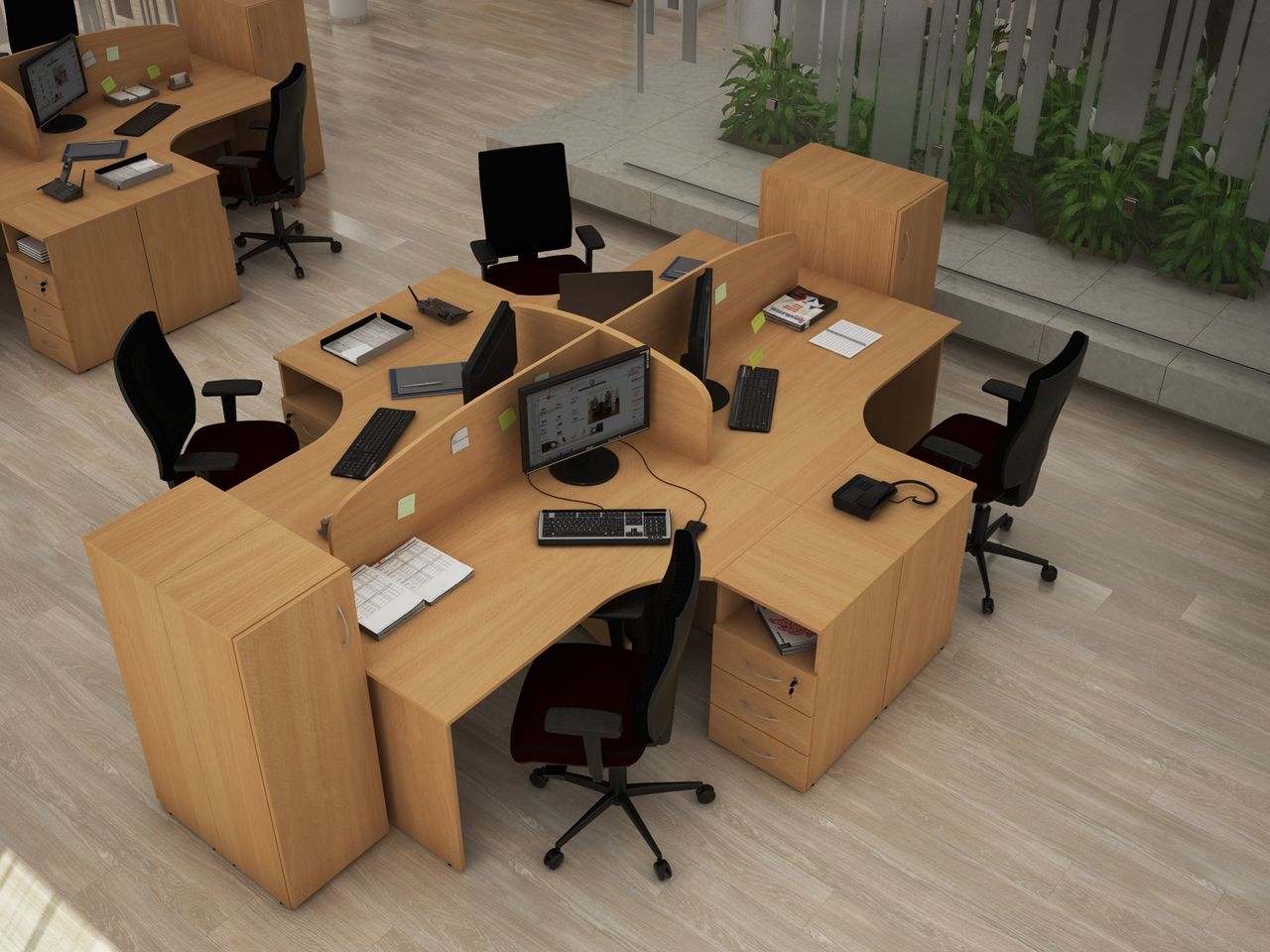
Cabinet layout
The traditional way of organizing office space. The premises are divided into offices and waiting areas for visitors. Each office can have from 1 to 4-5 employees of a single / related profile. The advantage of this type of space organization is the comfort for the employees. A quiet environment is maintained, which is conducive to work.
If more than one employee works in the office, their own “microclimate” is being established: colleagues choose the methods of interaction that are convenient for them, equip the workspace in a way that is convenient for themselves.

Disadvantages of the method:
- high cost - to erect partitions, build, buy or rent a room with a cabinet type of layout is much more expensive than organizing Open Space;
- employees do not interact with each other in order to get help from an employee of another department, you must invite him to the office or visit his workplace;
- the management team cannot control the workflow of all groups of employees;
- depending on personal qualities, individual employees may not get along within the same office or, on the contrary, devote most of their working time to personal discussions.

Mixed type
A layout option that combines the advantages of the two previous (cabinet and open) types and minimizes their disadvantages. With the combined organization of office space, some of the workplaces are located without partitions, and some are in offices. This is the optimal solution for companies with a wide range of activities, in which there are many employees of different directions.

This option can be suitable for advertising agencies where it is necessary to organize the working area of the creative team, as well as organize separate offices for bureaucratic employees, receiving clients.

Leader's place
More and more often, managers are abandoning separate offices and equipping their workplaces according to the Open Space principle, but with some differences. The boss's desk can be placed behind a transparent partition for a 360-degree view of the office. Or the fence may be completely absent, and the zoning of the area may be conditional (for example, the table is located on a small podium).

This way of placing the manager's desk gives him the opportunity to better control the work process, and also helps to simplify contact between senior in position and ordinary employees.

The classic option is the location of the chief's desk in a separate office. This method is suitable for professionals whose activities involve a large amount of paperwork or other work that requires perseverance and concentration. And also the office layout of the space is ideal for bosses, whose duties include regular working contacts with leaders / representatives of other organizations, and receiving citizens.

Visitor area
Many companies are moving away from the classic reception area in favor of an intuitive organization of the space. Some use bright signs so that the visitor does not have any difficulties with choosing a direction. In large office organizations, where a large flow of customers regularly passes, they introduce electronic queues, and the information necessary for the visitor (which window / office he should contact, the order in the queue) is displayed on the scoreboard and duplicated by voice.

The classic reception has remained in organizations where 1-2 employees can handle the flow of customers.
The furniture for the client area should be new and not worn out. Sofas, armchairs are arranged in rows, backs to each other or along the walls. It is very important to organize a children's area with separate seats and leisure options for the child (coloring, drawing board).

What useful things and accessories can be placed in the waiting area:
- TV with one video sequence (music videos, popular films, federal / cable channel) or the ability for visitors to independently switch programs. In this case, the remote control remains with the manager / receptionist, and the sign indicates who the visitor can contact.
- Press tables are somewhat outdated, but still a popular leisure option for customers in the waiting area.
- It is important that the correspondence is new and not worn out.
- Chargers, laptop places.
- Vending machines with coffee, food.
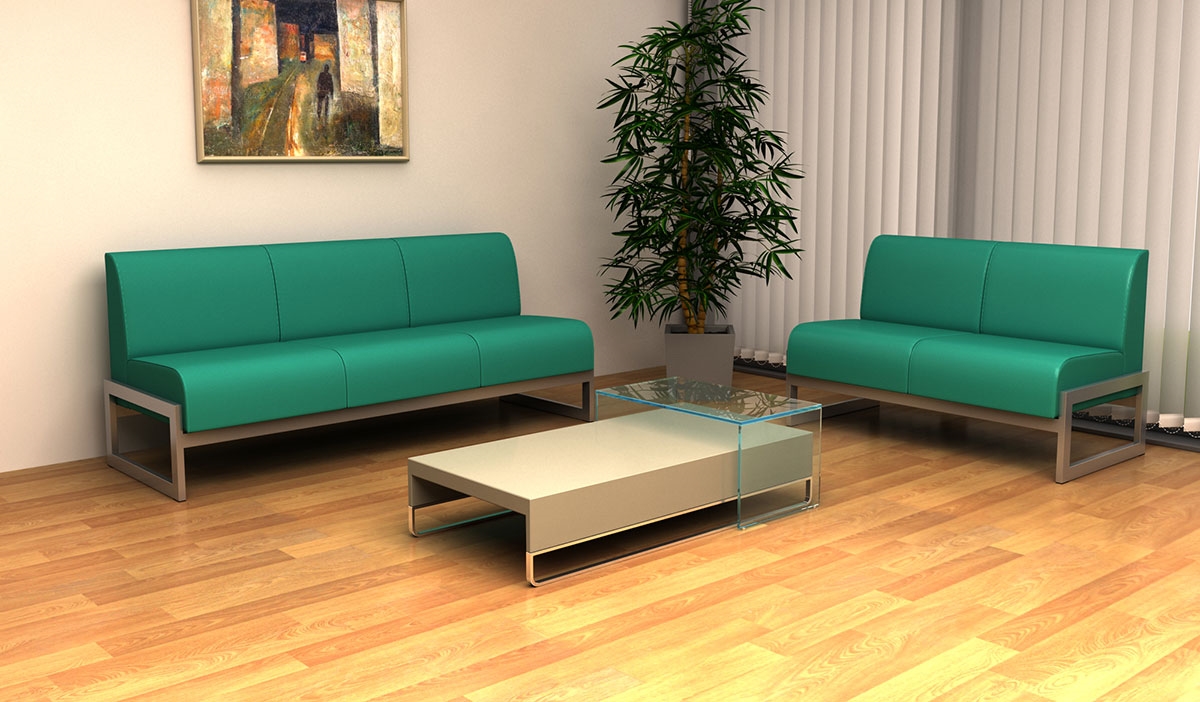
Small office furnishings
In a small space, it is important to adhere to the principles of ergonomics. Modern styles, such as hi-tech or minimalism, are most suitable. To visually enlarge the office, it is imperative to use mirror elements. These can be ceiling or wall panels, but not ordinary, but tinted or decorated mirrors are suitable.
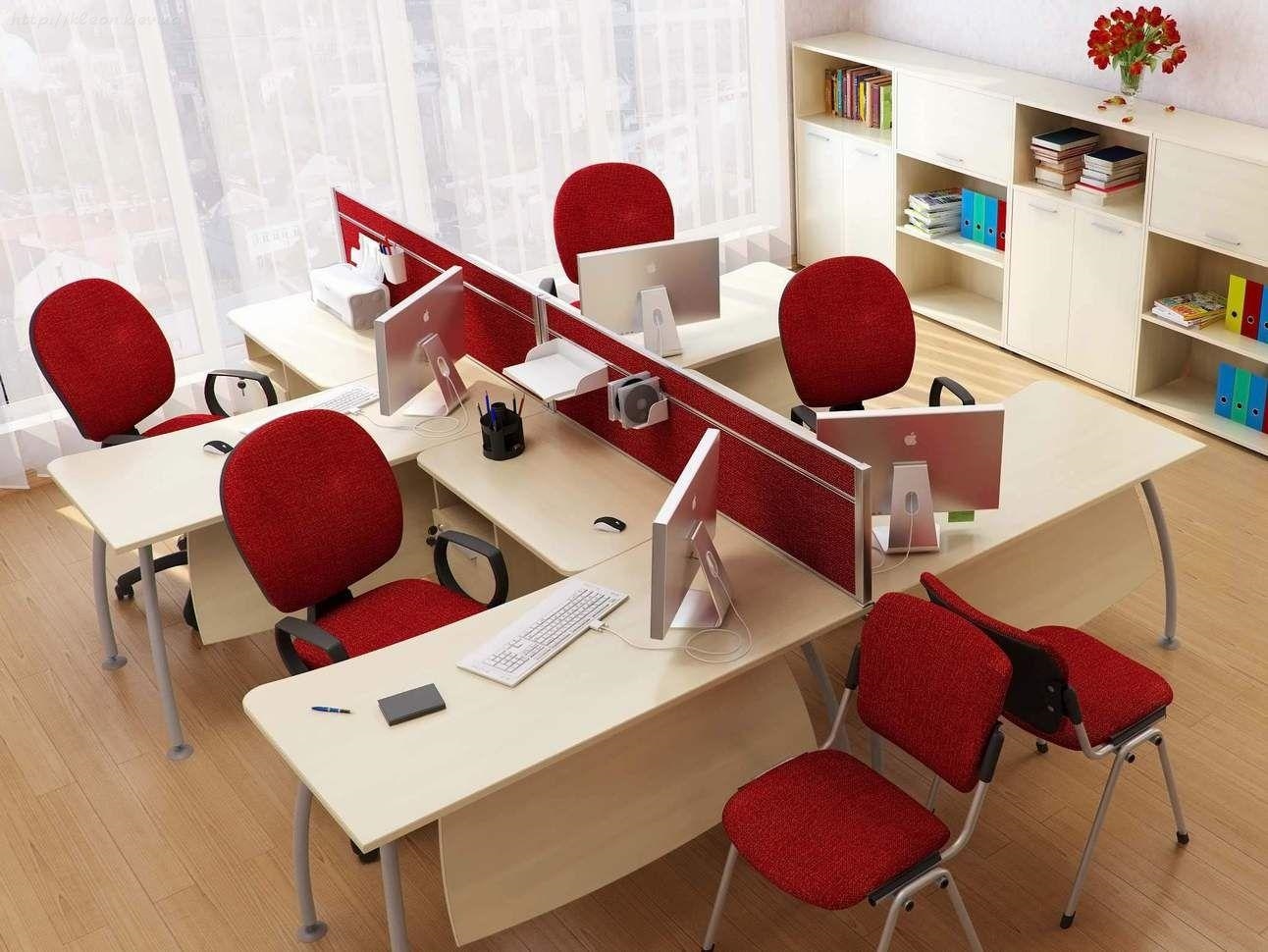
If space is limited, work tables can be placed close to each other with their outer sides and lightweight partitions can be added. They will block the view of seated employees on colleagues who are located on the other side of the fence. This option is suitable for the smallest offices where it is impossible to organize full aisles between the tables.

Arrangement of furniture in the office according to the rules of Feng Shui
According to Chinese teaching, office space should be organized in a special way:
- do not put the tables so that there is a door behind the back of the employee, if it is impossible to arrange the furniture in another way, you must first place a large object, and then the workplace;
- it is forbidden to put tables in a corner;
- in offices without windows, it is imperative to put plants or broadcast landscapes;
- tables should not be set so that workers are in a confrontational position - sitting facing each other;
- the table should be turned outward to the aisle, the wall is located behind the employee's back, if you sit facing the wall, fresh ideas will not come;
- mirrors should be placed so that employees do not bump into their reflections during work;
- the table is not placed on the line between the door and the window;
- the place of the chief is located at a distance from the entrance;
- if the room has a non-standard shape, it has more than 4 corners, the “extra” ones need to be corrected - put in them voluminous pots with plants, hang bamboo sticks;
- tables are not placed in front of sharp corners of the perimeter of the room or other furniture.

From the point of view of Feng Shui, offices that are located near elevators and stairs are less suitable for work.
How to avoid mistakes
First of all, you need to focus on the type of activity of the company, the number of employees and the nuances of personal interaction. You should not artificially create working teams from people who are not on the best terms. It is worth distinguishing between their jobs, at least symbolically.

You need to choose furniture only after all calculations have been made.
Before arranging tables and cabinets, it is worth considering all possible layout options and taking into account the possibilities of rearrangement for the future.
Video: what to consider when choosing office furniture










